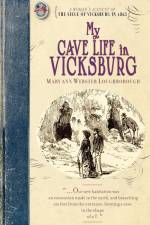von Mary Ann Webster Loughborough
23,00 €
This book is a rare and affecting personal narrative of the Civil War from a Southern woman. At the age of twenty-seven, along with her two-year old daughter and her husband, Confederate Major James M. Loughborough, Mary Ann Webster Loughbrough, arrived in Vicksburg. Shortly thereafter, the Union armies began a month and a half seige against the fortification in order to gain control of the Mississippi River. As she and her daughter took refuge in dugout caves in the hills above Vicksburg, Mary Loughborough recorded her daily life. Her personal account of the events of 1863 vividly documents some of the many extraordinary experiences of ordinary people on American soil during the Civil War. Many consider General U.S. Grant's Siege at Vicksburg (May 25-July 4, 1863), along with Robert E. Lee's defeat at Gettysburg on July 3, 1863, the turning point of the Civil War. During the siege, Union gunboats lobbed over 22,000 shells into the town. As the barrages continued, citizens of Vicksburg, Mississippi sought refuge on a ridge located between the main town and the rebel defense line, where over 500 caves were dug into the yellow clay hills of Vicksburg. Whether houses were structurally sound or not, it was deemed safer to occupy these dugouts. People did their best to make them comfortable, with rugs, furniture, and pictures. They tried to time their movements and foraging with the rhythm of the cannonade, sometimes unsuccessfully. Because of these dugouts or caves, the Union soldiers gave the town the nickname of ""Prairie Dog Village."" Despite the ferocity of the Union fire against the town, fewer than a dozen civilians were known to have been killed during the entire siege. Mary Loughbrough tells the story of the Siege from the citizen's point of view.


